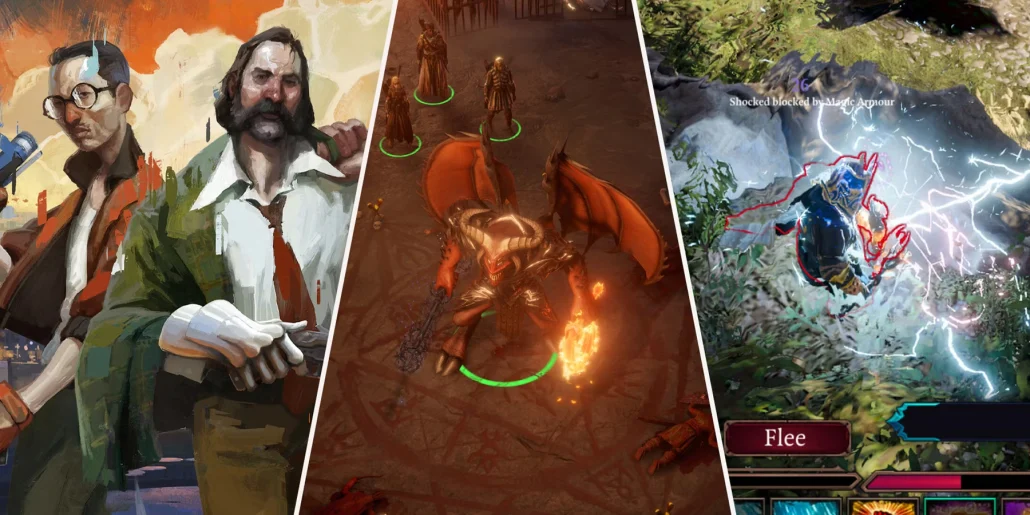Isometric RPGs, also known as “cRPGs” or “Computer Role-Playing Games,” have been around since the late 1970s, but they reached their peak of popularity in the 90s and early 2000s. These games have a distinctive top-down perspective that allows for strategic gameplay and immersion in a richly detailed world. From classics like Baldur’s Gate and Fallout to modern hits like Pillars of Eternity and Divinity: Original Sin, isometric RPGs continue to captivate players with their deep stories, complex characters, and challenging gameplay. We will explore the fundamentals of this cult-classic genre and introduce some of the best games this genre offers.
What is an isometric RPG?
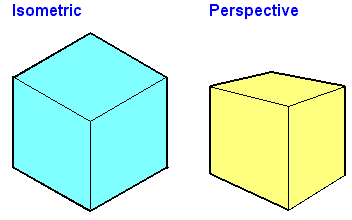

An isometric RPG, or role-playing game, features a top-down, isometric perspective and gameplay mechanics commonly associated with traditional RPGs, such as character development, questing, and combat. Isometric RPGs are often set in fantasy or sci-fi worlds and feature rich storytelling, immersive environments, and various gameplay systems. These games have been popular since the 1990s and have continued to evolve and innovate in recent years with the introduction of new technology and gameplay mechanics.
How Are Isometric Games Made?
Isometric games are typically made using specialized best game engines or game development tools that support isometric game development. These tools often provide pre-built isometric game assets, such as tilesets and character sprites, which can be used to create the game world.
In isometric game development, the game world is typically created using a 2D grid-based system, where each square on the grid represents a tile in the game world. The game assets are then placed on the grid to create the game world.
Isometric games also typically use a specialized camera system that provides a 3D perspective of the game world. This camera system is often called an “isometric camera” or “pseudo-3D camera,” It works by rendering the game world from a fixed angle and using foreshortening to give the appearance of depth and perspective.
In addition to the game engine and camera system, isometric games often require specialized tools for creating game assets, such as level editors and sprite editors. These tools allow game developers to create the game world and game assets quickly and efficiently without the need for extensive programming or scripting knowledge.
Are isometric games 2D or 3D?
Isometric games can be considered as a combination of both 2D and 3D. While the graphics and artwork are created in 2D, the game engine renders the visuals in a 3D isometric perspective, giving the illusion of depth and three-dimensionality. This is achieved by rendering the graphics at an angle and scaling them to make them appear larger or smaller depending on their position in the game world. The result is a game that appears to be 3D but is technically still 2D.
What are the Benefits of Isometric Games?
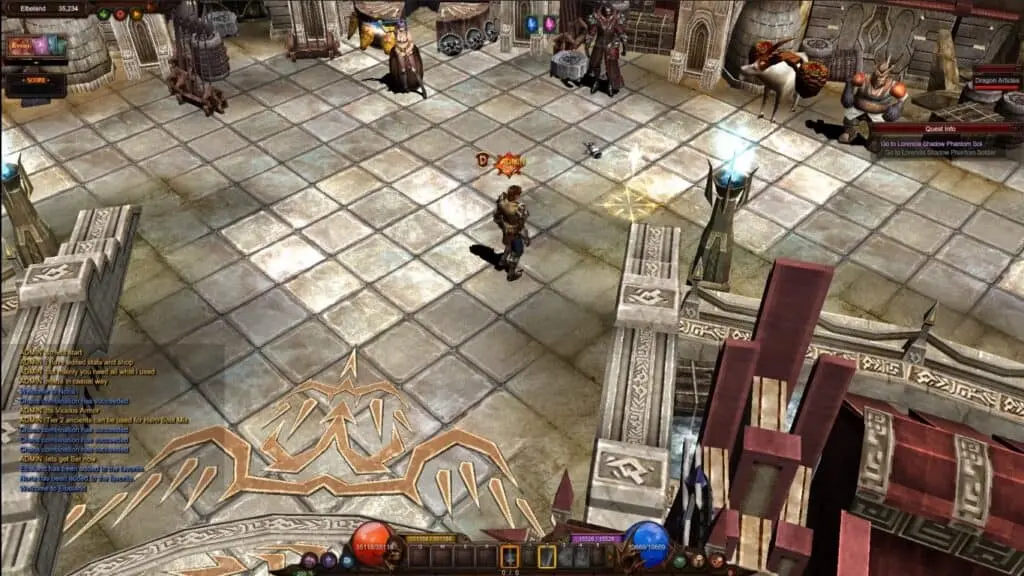

Isometric games offer several benefits, including:
- Visually Appealing: Isometric perspective creates a 3D illusion with 2D assets, resulting in visually stunning environments.
- Easy to Create: Designers can create complex environments and buildings without the technical challenges of true 3D.
- Resource Efficiency: Isometric games typically require fewer resources, making them accessible to a wider range of devices.
- Classic Charm: Isometric games evoke nostalgia and have a timeless appeal.
- Strategic Gameplay: The perspective allows for strategic planning and decision-making in games like city builders and strategy games.
- Intuitive Controls: Players find it easy to navigate isometric worlds, enhancing the overall user experience.
- Aesthetic Diversity: Isometric perspective suits various genres, from RPGs to puzzle games, providing versatility for developers.
- Reduced Development Time: Creating assets for isometric games can be quicker compared to full 3D, shortening development cycles.
- Artistic Freedom: Developers have more artistic freedom with assets and level design.
- Cross-Platform Compatibility: Isometric games often translate well across different platforms and devices.
The History of Isometric Games
Isometric games have a rich and varied history that spans multiple decades, dating back to the early days of video game development. The term “isometric” originates from the Greek words “iso” (equal) and “metric” (measure), referring to the equal measurement of lines in the game’s perspective. One of the earliest examples of isometric graphics in video games can be traced back to the 1982 release of “Zaxxon,” an arcade shooter developed by Sega. “Zaxxon” utilized an isometric perspective to simulate 3D graphics, providing players with a novel visual experience at the time.
However, it was the release of “Knight Lore” in 1984, developed by Ultimate Play the Game for the ZX Spectrum, that popularized the isometric perspective in video games. “Knight Lore” introduced a revolutionary blend of exploration, puzzle-solving, and platforming gameplay within a visually stunning isometric world. The game’s success inspired a wave of isometric titles throughout the 1980s and 1990s, including classics such as “Solstice,” “SimCity,” and “Commandos: Behind Enemy Lines.” These games showcased the versatility and appeal of the isometric perspective, offering players innovative gameplay experiences across various genres, from action-adventure to strategy and simulation.
The isometric trend continued to evolve in the early 2000s with the emergence of 3D graphics technology, allowing developers to create more immersive and detailed isometric worlds. Games like “Fallout” and “Diablo” demonstrated the continued relevance and popularity of the isometric perspective, captivating players with their rich storytelling, strategic depth, and visually striking environments. In recent years, indie developers and retro enthusiasts have revitalized interest in isometric games, producing a diverse range of titles that pay homage to the genre’s legacy while pushing the boundaries of creativity and innovation in game design. Today, isometric games remain a cherished and influential aspect of gaming history, celebrated for their distinctive aesthetic, engaging gameplay, and enduring appeal to players of all ages.
The 10+ Best Isometric RPGs
Over the years, many fantastic isometric RPGs have been released, each with its unique features and gameplay mechanics. Let’s look at the 10 best isometric RPGs of all time, each of which has significantly impacted the genre and continues to be enjoyed by gamers worldwide.
Hades (2018)
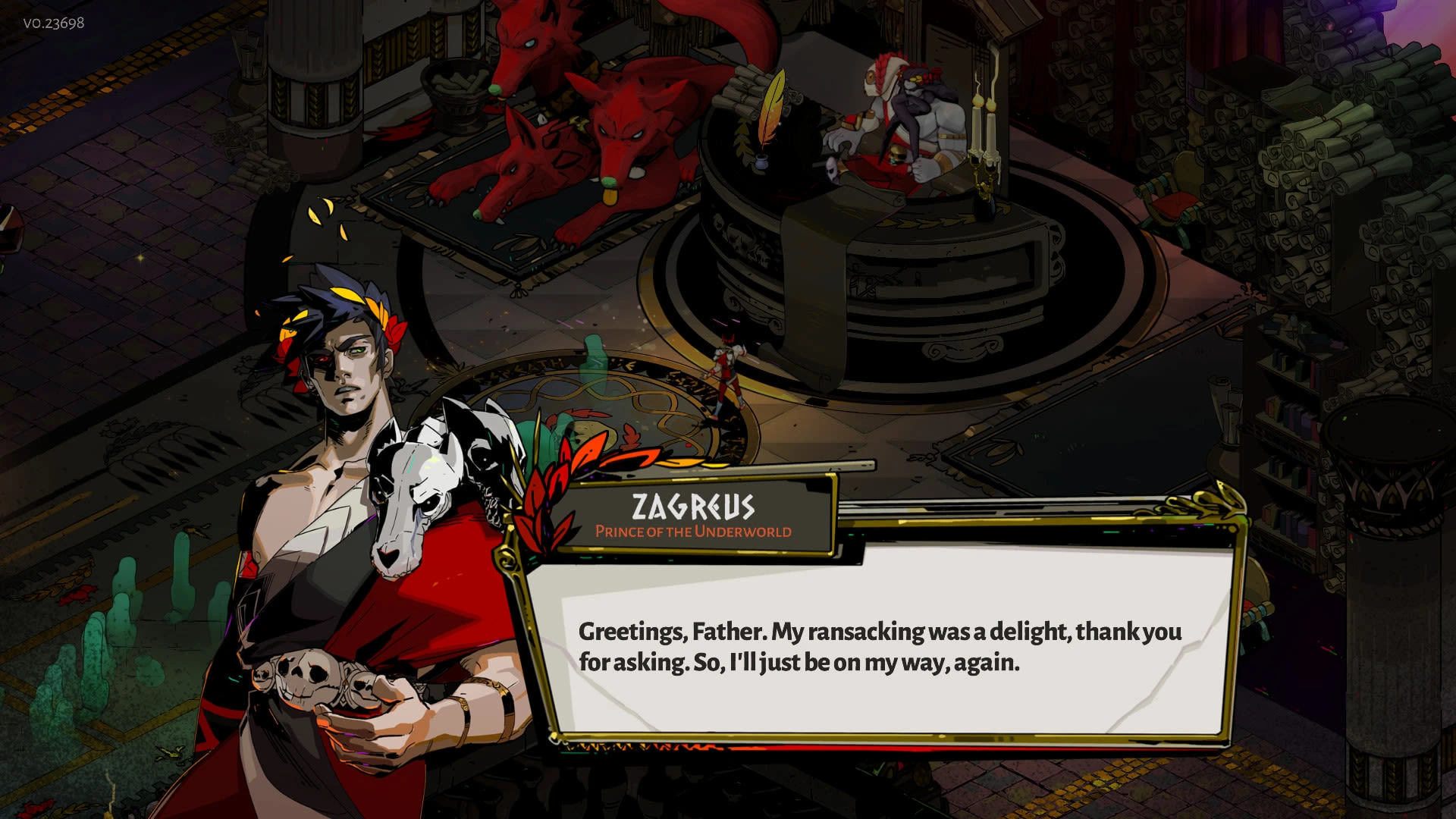

Hades is a critically acclaimed roguelike action RPG developed and published by Supergiant Games. It was released in 2018 and received widespread acclaim for its fast-paced combat, stunning visuals, and compelling story. The game follows Zagreus, the son of the Greek god Hades, as he tries to escape from the underworld and reach the surface.
The gameplay of Hades is centered around hack-and-slash combat, with various weapons and abilities to choose from. Each run is procedurally generated as a roguelike, meaning that every playthrough is different. The game also features a rich cast of characters and branching storylines that develop as the player progresses. Hades was praised for its innovative storytelling, dynamic combat system, and gorgeous art style, making it one of the most beloved isometric RPGs of all time.
Diablo II: Lord of Destruction (2001)
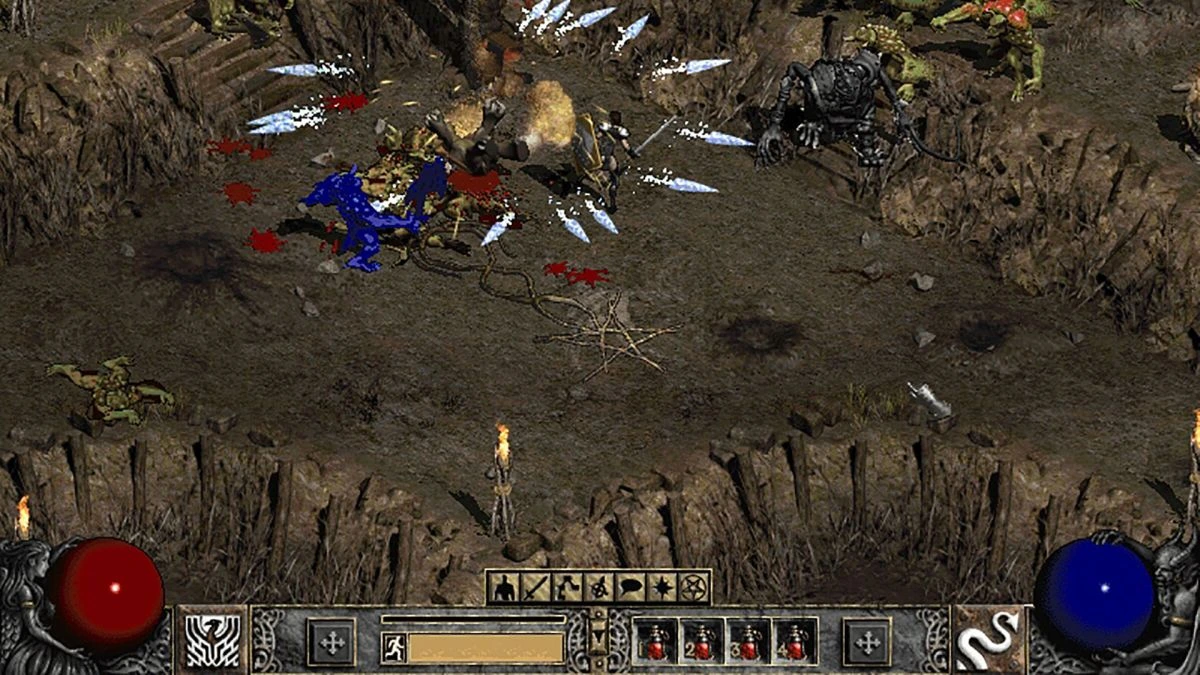

Diablo II: Lord of Destruction is an action-packed, isometric RPG developed by Blizzard Entertainment. It is the original Diablo II expansion pack, released in 2000. Having both the base game and the expansion installed is considered to be the definitive way to experience Diablo 2. The game is set in the world of Sanctuary, where players must fight against the demon lords Baal, Mephisto, and Diablo, who seek to rule over the world. The game features five character classes: the Amazon, Barbarian, Necromancer, Paladin, and Sorceress. Each class has its unique skills and abilities, allowing players to customize their characters to suit their playstyle.
One of the reasons why Diablo II: Lord of Destruction is considered one of the best isometric RPGs is its replayability. The game features randomized dungeons, enemies, and loot drops, ensuring that no two playthroughs are ever the same. Additionally, the game’s difficulty increases as players progress through the game, adding to its challenge. The game also features a robust multiplayer component, allowing players to team up with friends to tackle the game’s challenges together. With its addictive gameplay, engaging story, and replayability, Diablo II: Lord of Destruction remains a classic among isometric RPGs.
Disco Elysium (2019)
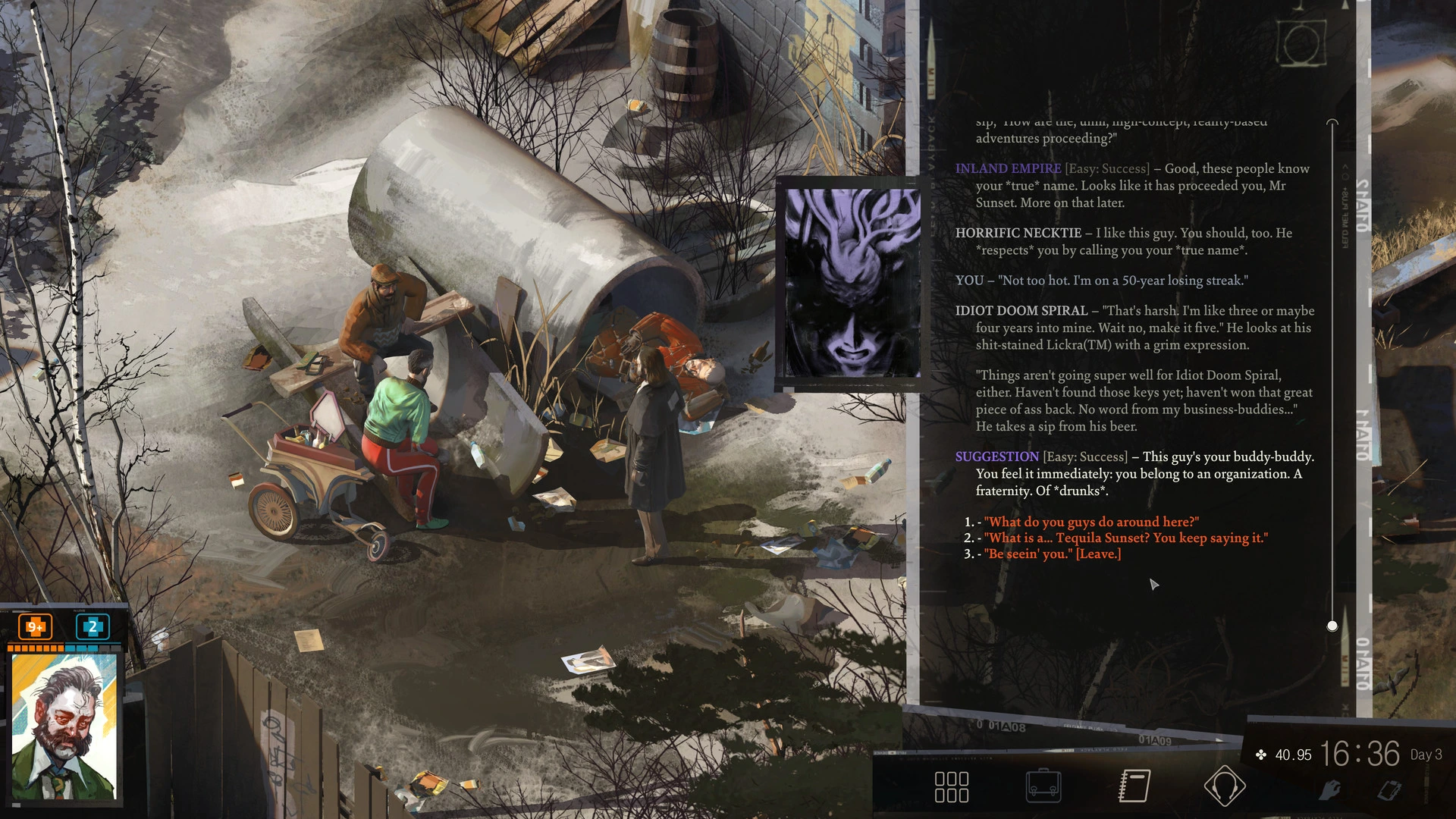

Disco Elysium is a unique isometric RPG developed by ZA/UM that was released in 2019. It’s set in a fictional city called Revachol and puts players in the shoes of a detective suffering from amnesia. The game features a dialogue-heavy story that’s often described as a cross between a murder mystery and a political thriller.
Disco Elysium’s emphasis on player choice and innovative skill system sets it apart from other RPGs. Players are given a vast range of dialogue options and choices that can lead to different outcomes. Their character’s skills and stats directly affect their ability to succeed in various situations. The game also features an unusual skill system where the player’s various thoughts and ideas can become physicalized as “thought cabinets,” which the player can use to improve their abilities in specific areas. Overall, Disco Elysium has received widespread critical acclaim for its innovative design and storytelling, and it’s widely considered to be one of the best RPGs of recent years.
Baldur’s Gate III (2020)
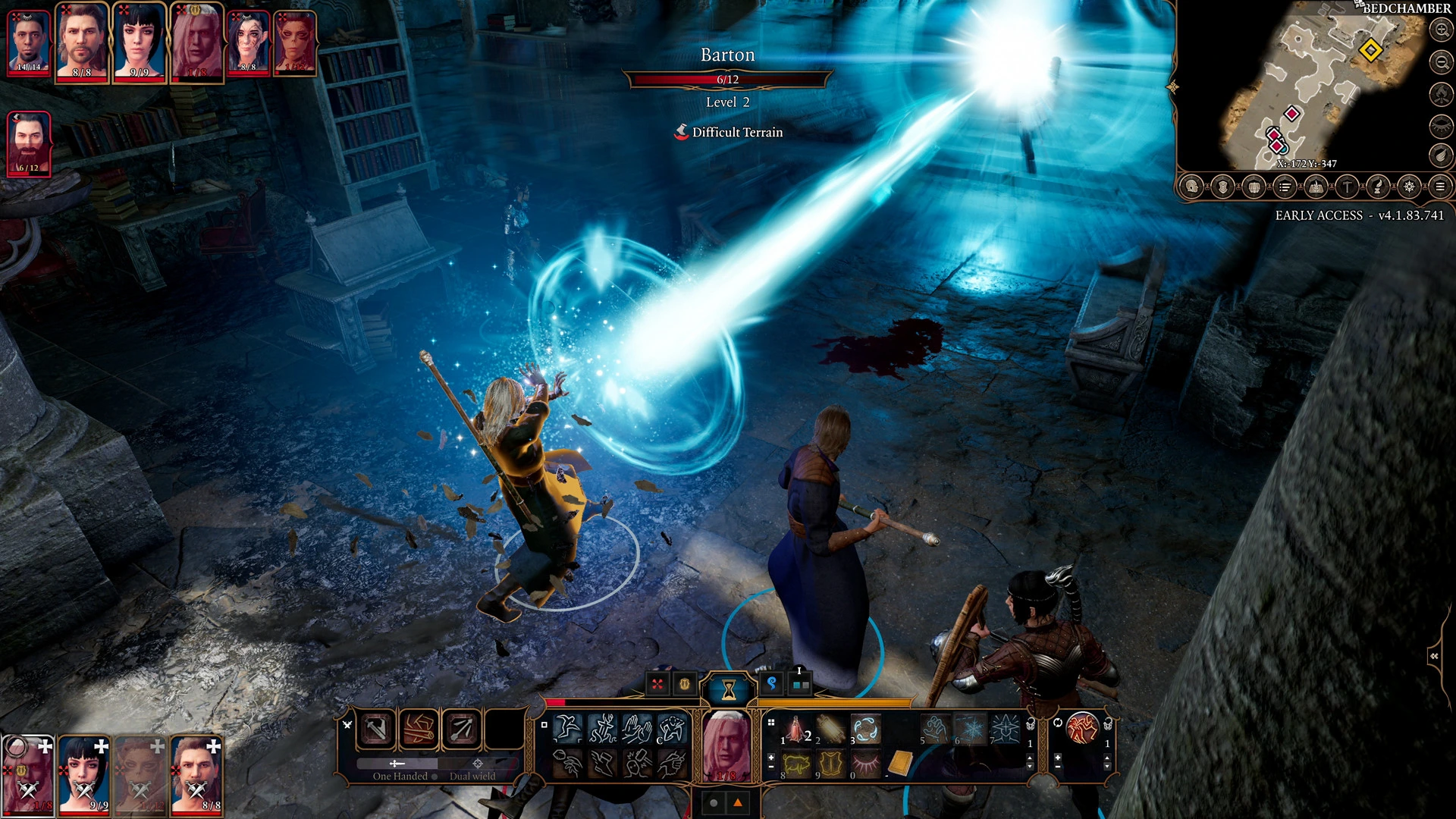

Baldur’s Gate III is an isometric RPG developed and published by Larian Studios and entered early access in 2020. The game is the third main entry in the Baldur’s Gate series and is set in the same world as the previous games but with a new story and characters. Baldur’s Gate III is based on the Dungeons & Dragons 5th edition ruleset and features turn-based combat, party management, and character customization. The game also includes a complex dialogue system and branching storylines, allowing players to make choices that affect the outcome of the game.
In Baldur’s Gate III, players take on the role of a character infected by a mind flayer tadpole, which grants them powerful abilities but also threatens to turn them into a mind flayer. Players must venture through various environments, from ancient ruins to underground caverns, to find a way to remove the tadpole before it’s too late. The game also includes multiplayer options, allowing players to join forces with friends or strangers to tackle the game’s challenges together. Overall, Baldur’s Gate III is a well-crafted isometric RPG that offers a deep and engaging experience for fans of the genre.
Fallout 2 (1998)
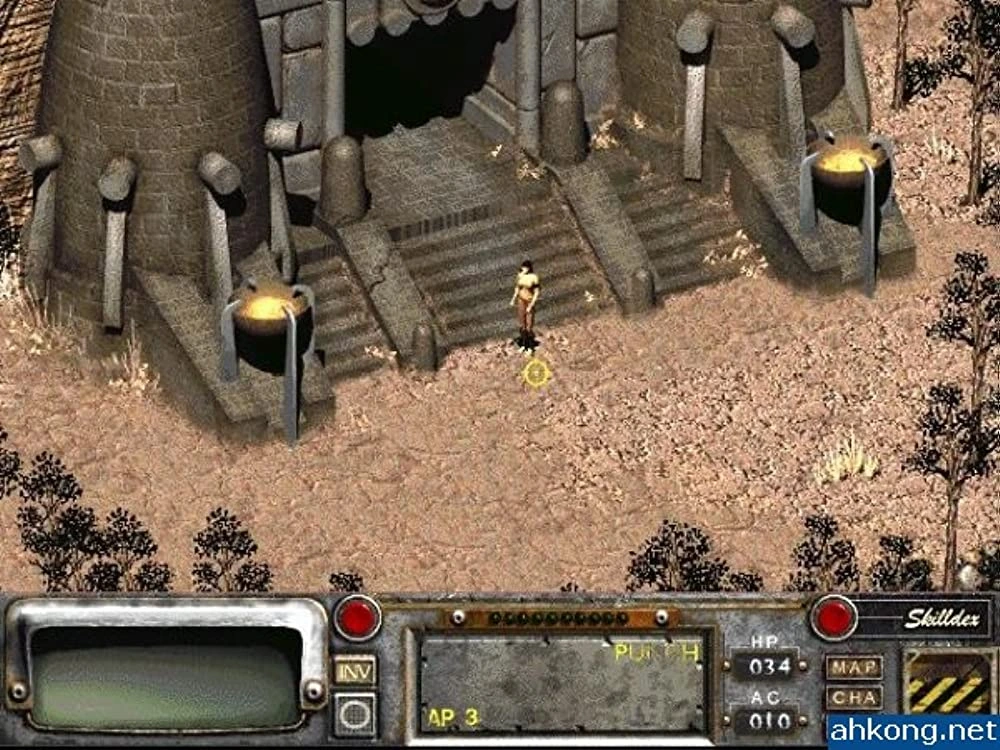

Fallout 2 is a post-apocalyptic isometric RPG developed by Black Isle Studios and published by Interplay Entertainment. It was released in 1998 and is set in a world devastated by a nuclear war. The game is set in California, 80 years after the events of the original Fallout game. The player assumes the role of a descendant of the Vault Dweller from the first game and is tasked with finding a way to save their village from drought.
Fallout 2 features a vast open world filled with dangerous mutants, hostile factions, and various quests to complete. The game also introduced a reputation system that tracks the player’s actions and influences how the game’s characters perceive them. The combat system is turn-based, with the player controlling a party of up to six characters. The game is known for its dark humour, mature themes, and memorable characters, making it a classic of the isometric RPG genre.
Planescape: Torment (1999)
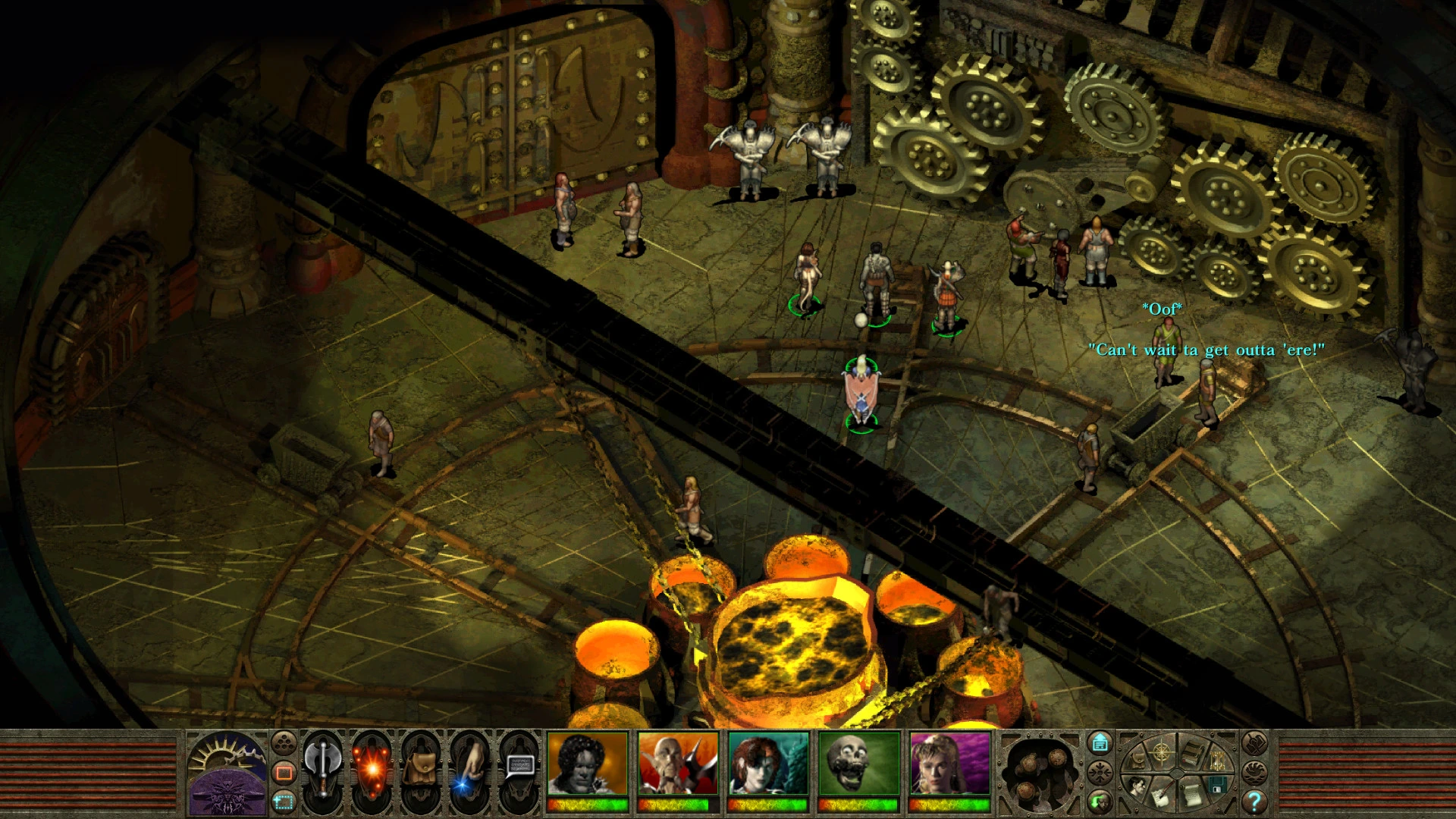

Planescape: Torment, developed by Black Isle Studios and published by Interplay Entertainment, is widely regarded as one of the greatest RPGs of all time. It was released in 1999 for Windows and is set in the Planescape campaign setting of Dungeons & Dragons. The game’s story is centred on the Nameless One, an immortal man who has lived many lives but can’t remember any of them. The player must explore the city of Sigil and other locations to discover the truth about the Nameless One’s past and true nature.
Planescape: Torment is known for its excellent writing, deep character development, and philosophical themes. The game features a branching storyline with multiple endings, and the player’s choices throughout the game significantly impact the narrative. The game also introduced several innovative gameplay mechanics, such as the ability to talk to objects and the concept of “alignment shifts,” which can affect the player’s character based on their actions in the game. Overall, Planescape: Torment is a must-play for any RPG fan who enjoys a deep, immersive story with well-written characters and philosophical themes.
Underrail (2015)
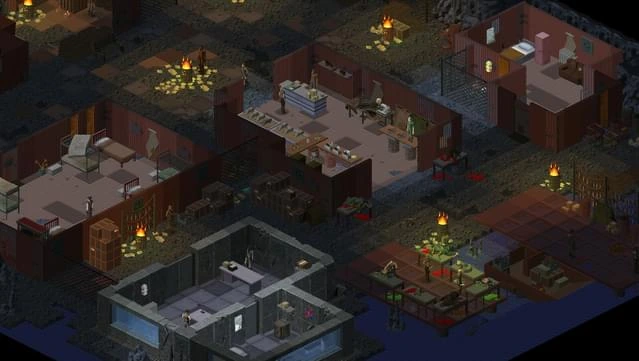

Underrail is a post-apocalyptic isometric RPG developed by Stygian Software and released in 2015. The game takes place in a world where a massive disaster forces humanity to move to underground tunnels, and the player takes on the role of a survivor in this harsh and unforgiving world.
Underrail features a turn-based combat system, where players can use various weapons and equipment to defeat enemies. The game also offers a deep character creation system, with players able to allocate skill points and choose from various abilities to build a unique character. The game’s story is non-linear and offers multiple paths to completion, with players being able to make decisions that will affect the game’s ending. The game has received critical acclaim for its unique setting, deep gameplay mechanics, and compelling story.
Divinity: Original Sin II (2017)
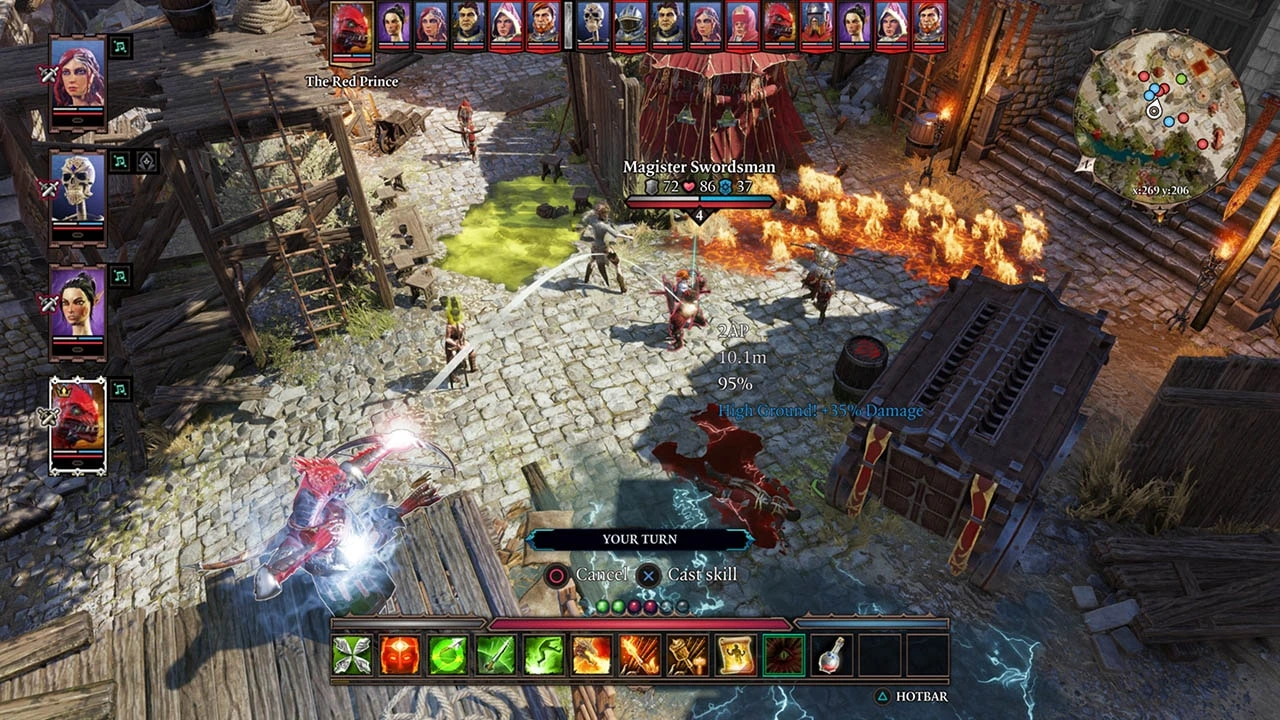

Divinity: Original Sin II is an isometric RPG developed and published by Larian Studios. It was released in 2017 as a sequel to the 2014 game Divinity: Original Sin. The game is set in a world where magic is a real force, and players take control of a party of characters as they explore a vast, open world filled with quests and mysteries to solve.
The gameplay is turn-based and allows players to engage in tactical combat with a wide variety of enemies. The game features a complex narrative in which a host of interesting and well-written characters drive changes based on the player’s choices and the story. Divinity: Original Sin II also features an innovative cooperative mode that allows up to four players to play together, making it a great choice for those who enjoy playing games with friends.
Wasteland 3 (2020)
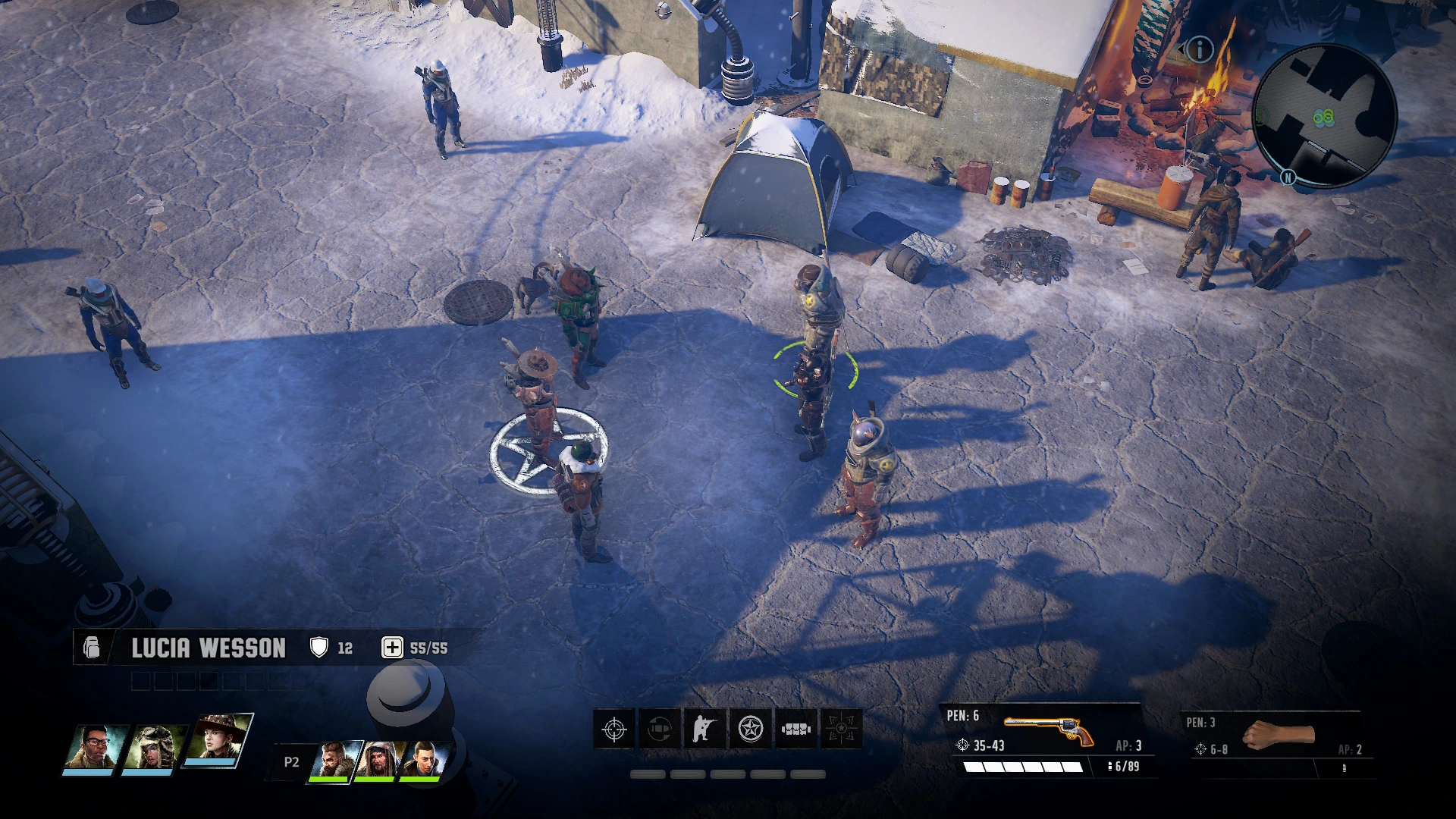

Wasteland 3, developed by inXile Entertainment, is a post-apocalyptic role-playing game that takes place in a frozen wasteland. It is a sequel to the original Wasteland game released in 1988 and is the third installment in the series. Wasteland 3 is set in Colorado and features a turn-based combat system. The game allows players to create and customize their characters, choose their skills and abilities, and form a party of up to six members.
The game’s story revolves around the player’s Ranger team, who are sent to Colorado to establish a new base and investigate the area. The decisions players make throughout the game will affect the outcome of the story, leading to multiple endings. Wasteland 3 has received critical acclaim for its storytelling, character development, and tactical combat system. The game’s setting, atmosphere, and moral choices make it a must-play for any RPG fan.
Final Fantasy Tactics: The War of the Lions (2007)
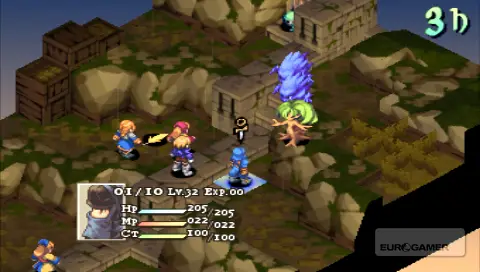

Final Fantasy Tactics: The War of the Lions is a tactical role-playing game developed by Square Enix for the PlayStation Portable (PSP). The game was first released in 1997 for the PlayStation, but it was later ported to the PSP in 2007 with added features and improvements. The game takes place in the fictional kingdom of Ivalice, where players control a group of characters who are part of the Lionsguard. This military unit is responsible for protecting the kingdom.
In Final Fantasy Tactics: The War of the Lions, players can choose from various character classes, each with unique abilities and skills. The game features a complex job system that allows players to customize their characters and build a team that suits their playstyle. The game also has a rich storyline with political intrigue and complex character relationships that keep players engaged throughout the game. The game’s isometric graphics and strategic gameplay have made it a classic among tactical RPG fans, and its success has spawned several sequels and spin-offs.
Dragon Age: Origins (2009)
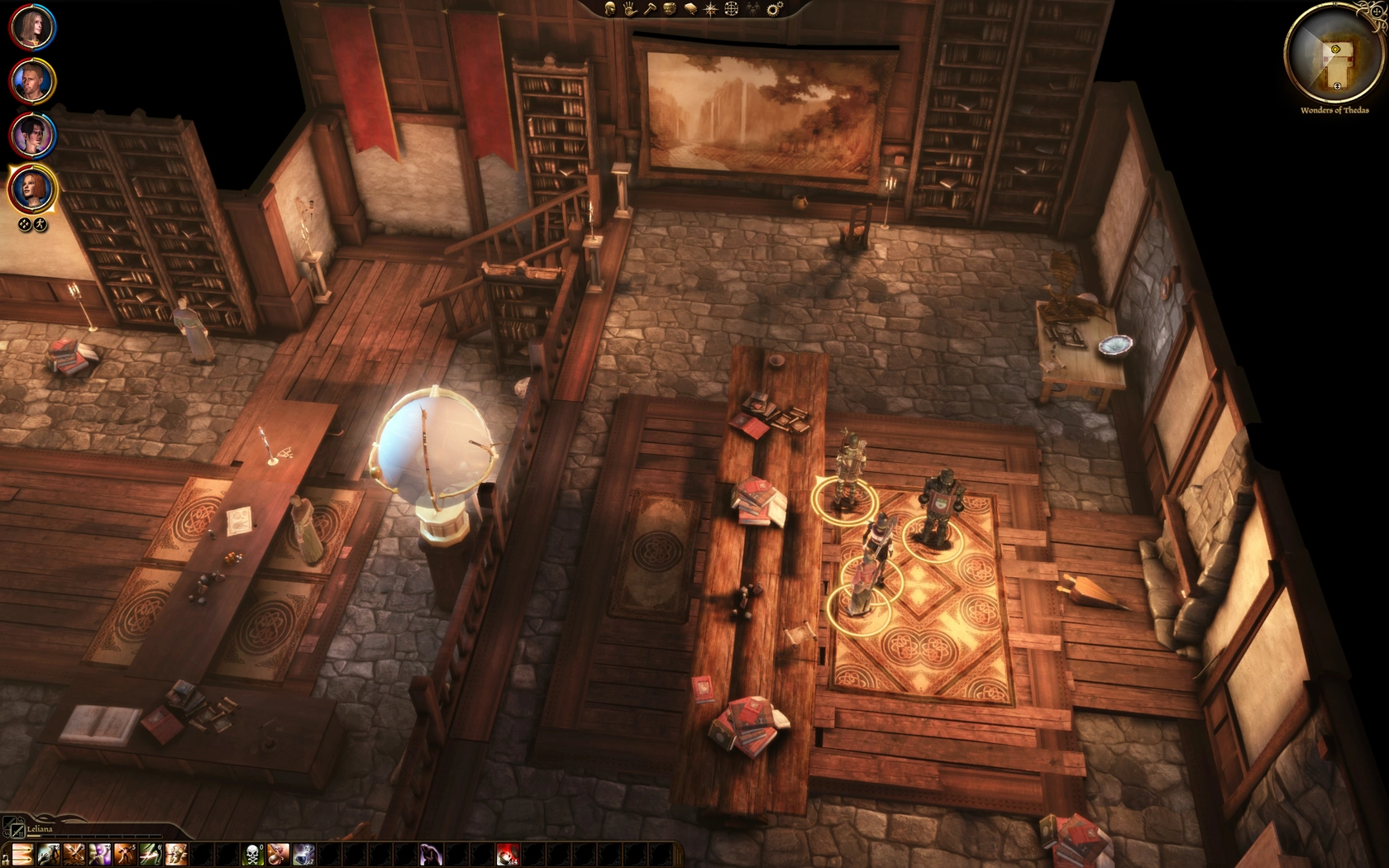

Dragon Age: Origins, developed by BioWare, stands as a timeless classic in the realm of role-playing games (RPGs). Set in the immersive and rich fantasy world of Thedas, the game takes players on an epic journey as a Grey Warden, a sworn guardian against the dark Blight that threatens the land. From the very beginning, Dragon Age: Origins captivates players with its deep and engaging narrative, where every choice made carries significant consequences, shaping the course of the story and relationships with companions.
One of the game’s defining features is its isometric perspective, providing a strategic view of battles and encounters. This perspective grants players a tactical advantage, allowing them to carefully plan their moves and adapt to the ever-changing situations in the heat of combat. With a diverse range of companions, each with their own compelling backstories and personalities, Dragon Age: Origins excels in character development and interpersonal dynamics. The game’s isometric design not only adds to its gameplay depth but also allows players to immerse themselves in the intricately detailed environments of Thedas. By blending its captivating storytelling, robust combat system, and isometric perspective, Dragon Age: Origins has rightfully earned its place as a beloved classic in the RPG genre.
Path of Exile (2013)
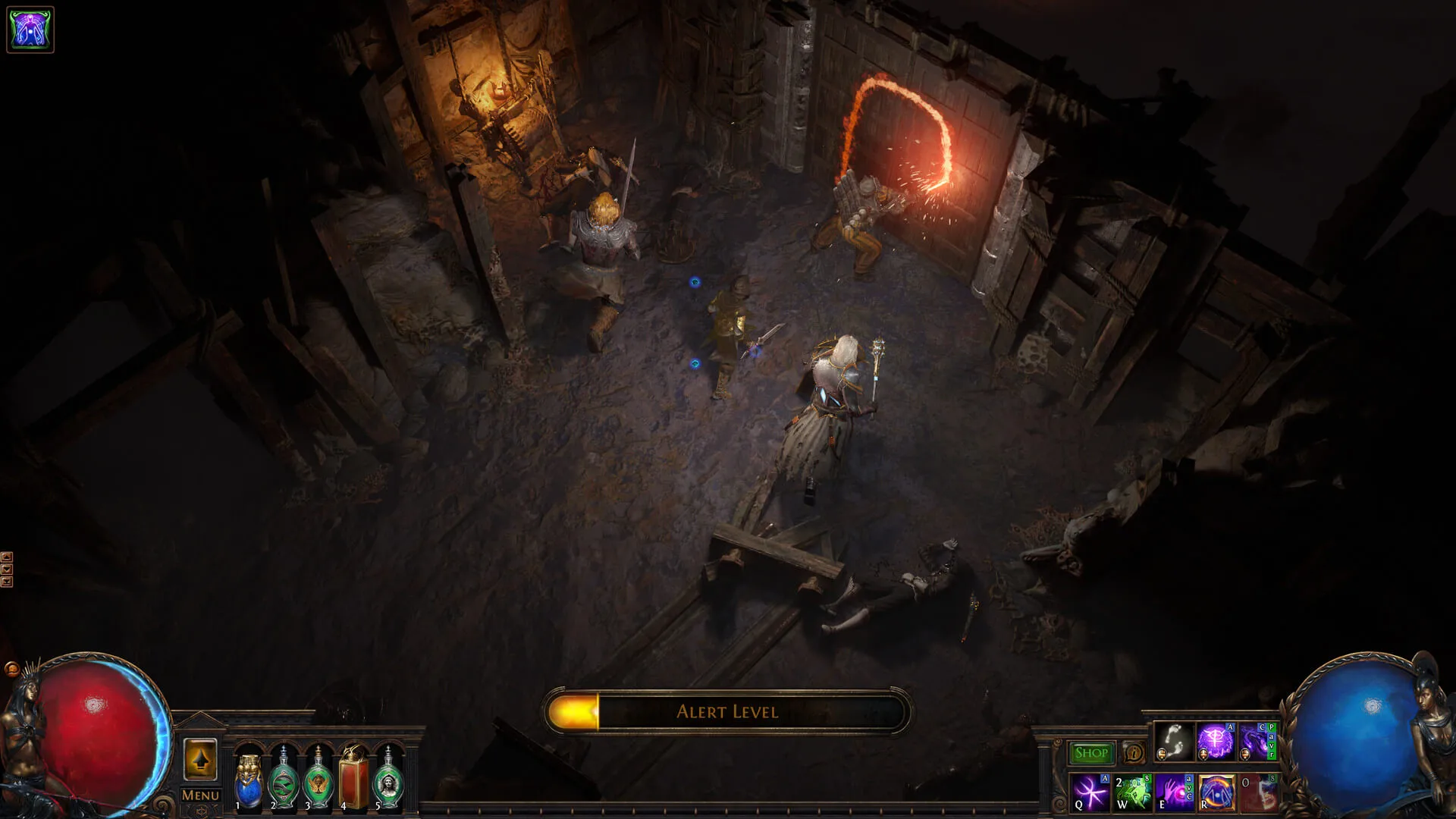

Path of Exile, an action RPG developed by Grinding Gear Games, has emerged as a shining gem among the vast sea of isometric games. Set in the dark and gritty world of Wraeclast, the game offers a grim and atmospheric experience, complemented by its deep lore and haunting visuals. One of the game’s most praised aspects is its incredibly robust character customization system, featuring an expansive skill tree that allows players to create unique and diverse builds to suit their playstyle. This level of flexibility and freedom grants players the ability to truly craft their own destinies in the unforgiving and treacherous land of Wraeclast.
The isometric perspective in Path of Exile is an integral part of its gameplay, providing a bird’s-eye view of the action-packed battles and encounters. Players navigate through intricate dungeons, face hordes of challenging foes, and explore vast landscapes filled with mysteries and hidden secrets. The game’s isometric design lends itself well to the strategic planning required for successful combat, as players must carefully choose their moves and abilities in the face of formidable adversaries. With its deep character progression, dark and immersive world, and thrilling isometric gameplay, Path of Exile has garnered a massive and dedicated fanbase, solidifying its place as one of the finest isometric action RPGs available.
Encased (2021)
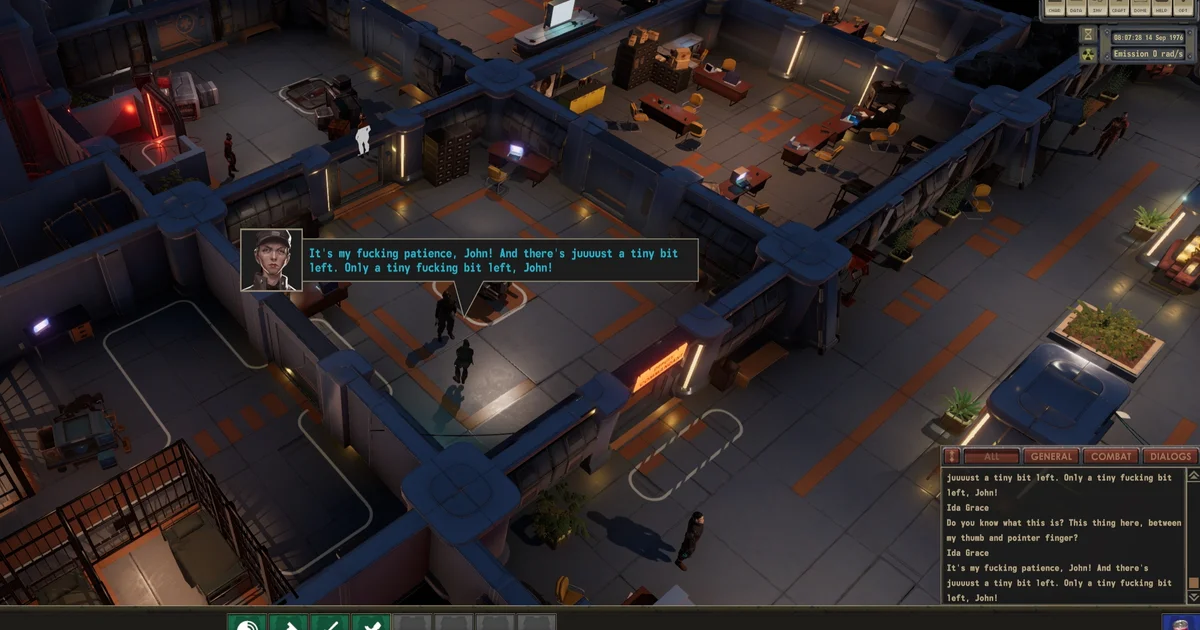

Encased, developed by Dark Crystal Games, is a captivating isometric RPG that takes players on an enthralling journey to an alternative 1976. Set in an otherworldly, post-apocalyptic dome called the Dome, the game presents a unique blend of science fiction and retro-futuristic aesthetics. Players become “Encased,” explorers sent to uncover the secrets of this enigmatic artifact. As they venture forth, they encounter a branching narrative with morally challenging choices that shape the outcome of the story. The game’s isometric perspective provides a strategic edge to the turn-based combat, where players must carefully position their characters and deploy a variety of skills and equipment to outwit adversaries and survive the dangers lurking within the Dome.
Encased stands out for its rich world-building and attention to detail, offering a compelling narrative with diverse characters and factions that respond dynamically to players’ actions. The isometric design enhances the immersive experience by allowing players to fully immerse themselves in the intricately crafted landscapes and ruins of the Dome. As they traverse through abandoned facilities and encounter bizarre anomalies, players uncover a web of mysteries and conspiracies, making Encased a thrilling isometric RPG that successfully combines engaging storytelling with challenging tactical gameplay.
Arcanum: Of Steamworks and Magick Obscura (2001)
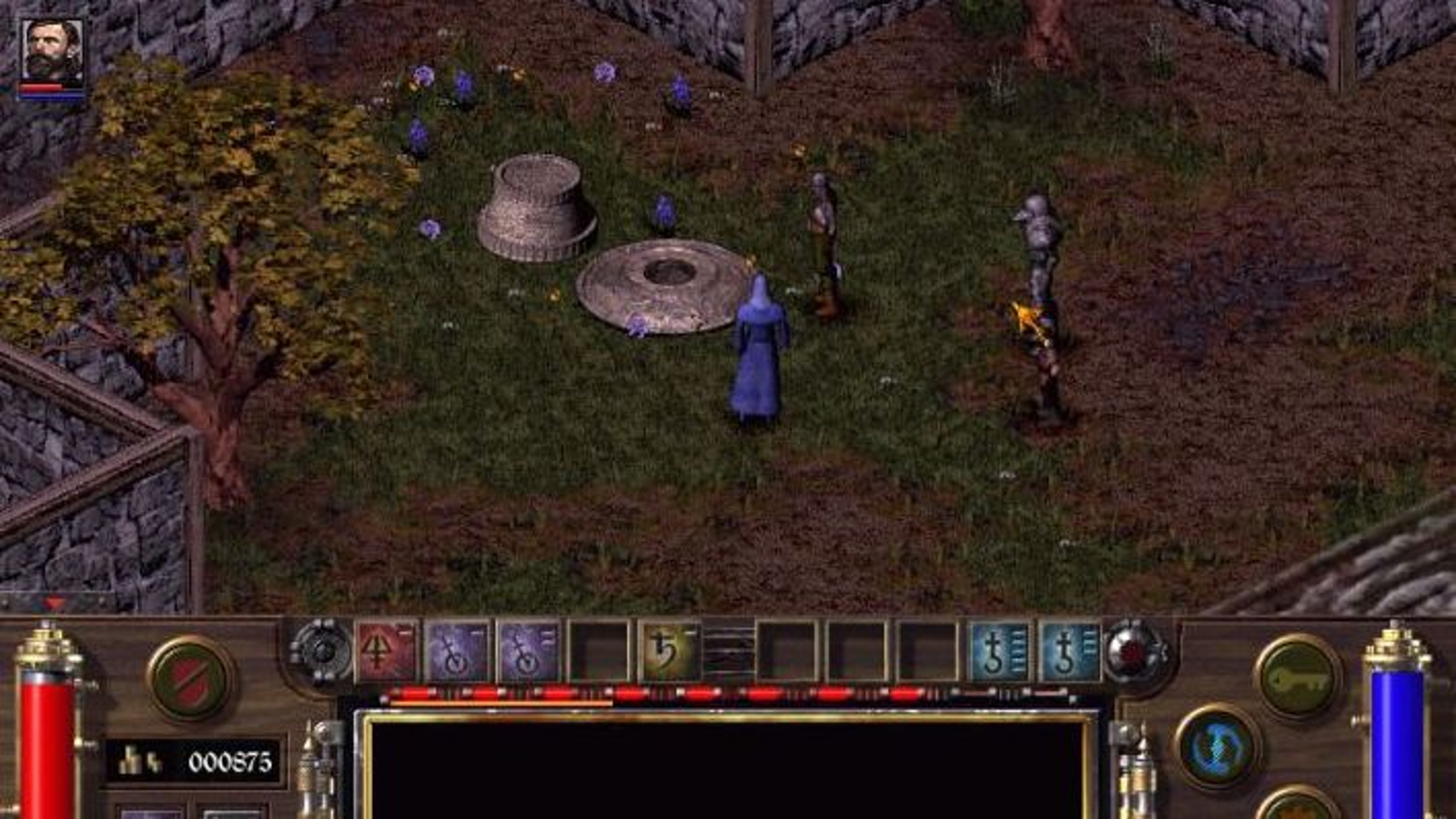

Arcanum is a classic isometric RPG that blends the Victorian era with steampunk and magic. Released in 2001, it offered players a deep and immersive world where technology and magic collided. One of the standout features of Arcanum was its open-ended character development system, allowing players to choose from various races, each with its own unique abilities and traits, and combine technology and magic in countless ways. The game’s rich narrative, full of moral choices, made it a standout title for its time. Despite some technical issues at launch, Arcanum’s captivating story, memorable characters, and unique setting have solidified its place as a cult classic in the world of isometric RPGs.
Dark Sun: Shattered Lands & Wake Of Ravager (1993-1994)
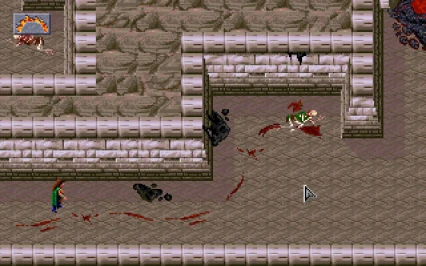

The Dark Sun series brought the popular Dungeons & Dragons universe to the isometric RPG genre with a unique and dark twist. Shattered Lands, released in 1993, and its sequel, Wake of Ravager, expanded on the world of Athas, a desert wasteland filled with powerful sorcery and scarce resources. The games stood out for their innovative use of the AD&D 2nd Edition ruleset and their focus on survival in a harsh environment. Players had to manage resources like water and food while navigating the treacherous politics of the desert city-states. Dark Sun: Shattered Lands and its sequel are celebrated for their challenging gameplay, deep lore, and the ability to explore a lesser-known corner of the D&D universe. These titles remain cherished classics among fans of isometric RPGs and Dungeons & Dragons alike.
Jagged Alliance 2 (1999)
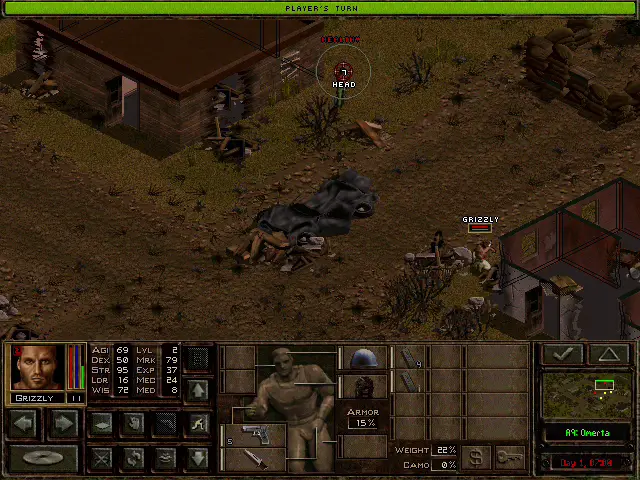

Jagged Alliance 2, released in 1999, is often regarded as one of the finest examples of turn-based tactical RPGs. The game combined isometric strategy with RPG elements to create a unique and addictively challenging experience. Players took on the role of mercenaries hired to liberate the fictional country of Arulco from a dictator. What set Jagged Alliance 2 apart was its emphasis on strategic planning and squad management. Players had to hire and train mercenaries, carefully plan their moves in turn-based combat, and make difficult decisions that affected the game’s outcome. The vast array of recruitable characters, each with their own personalities and quirks, added depth to the gameplay. Jagged Alliance 2’s engaging tactical battles and the sense of attachment players developed with their mercenaries have earned it a dedicated fanbase, turning it into a true cult classic in the world of isometric RPGs.
Avernum Series (1995-2018)
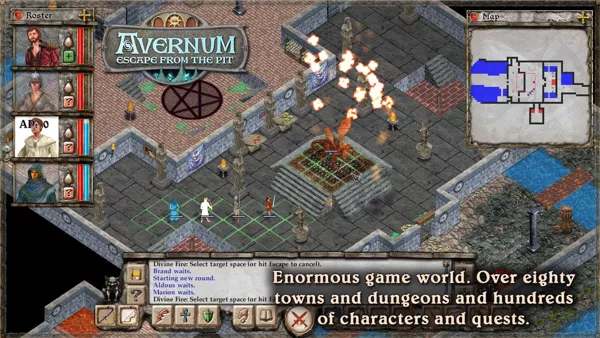

The Avernum series, developed by Spiderweb Software, is a long-running isometric RPG franchise known for its deep storytelling and open-world exploration. Beginning in 1995 with “Exile: Escape from the Pit” and continuing with numerous sequels and remakes, the Avernum series has consistently provided players with vast underground worlds to explore. Players are often cast as adventurers, explorers, or rebels in a subterranean realm filled with unique races, factions, and moral dilemmas. The series is renowned for its complex narratives, intricate character interactions, and the freedom it offers players to make meaningful choices. Avernum’s dedication to storytelling, world-building, and old-school RPG mechanics has garnered it a dedicated fanbase, making it a staple in the isometric RPG genre.
Geneforge Series (2001-2008)
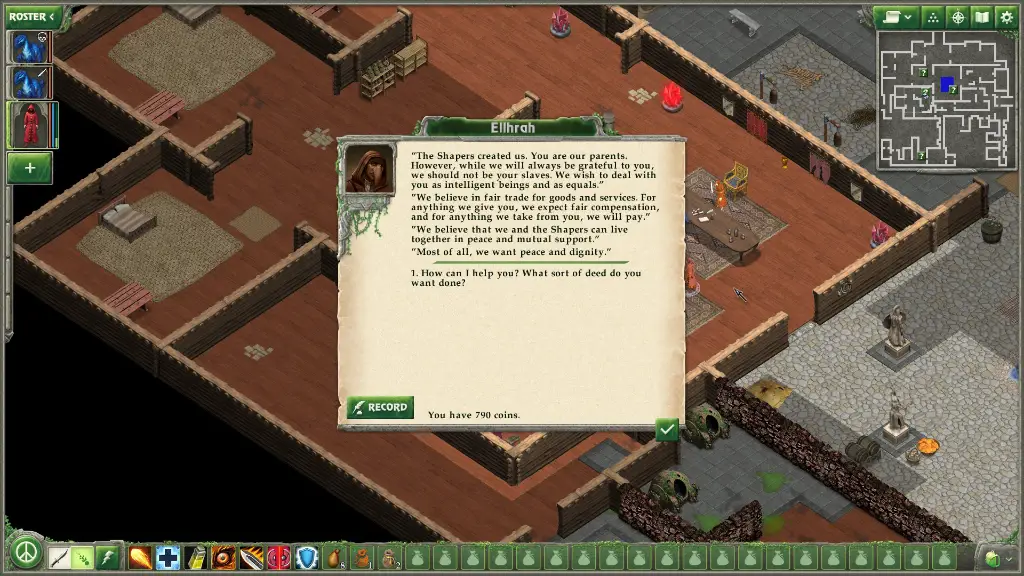

The Geneforge series, also crafted by Spiderweb Software, is another gem in the world of isometric RPGs. These games delve into the realm of fantasy, where players are thrust into a world ruled by shapers—individuals who can create and control life through magical manipulation. What sets Geneforge apart is its unique approach to character progression and storytelling. Players can shape their characters’ abilities based on the choices they make, which in turn influences the game’s narrative. The series offers complex moral decisions and the consequences that arise from them, allowing players to shape the world itself. The Geneforge series has gained a reputation for its intricate narrative design, well-developed world, and the sense of agency it gives players, cementing its place in the hearts of isometric RPG enthusiasts.
Temple of Elemental Evil (2003)
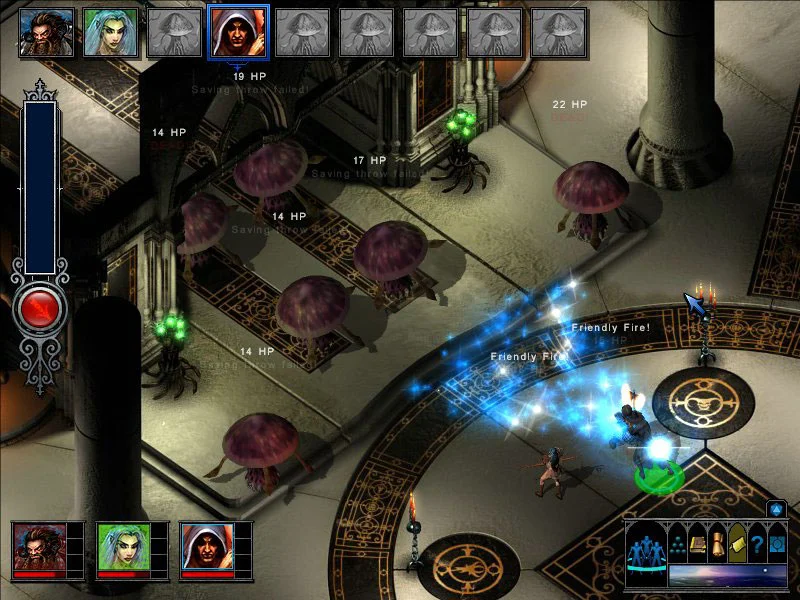

Based on the classic Dungeons & Dragons module of the same name, The Temple of Elemental Evil is an isometric RPG released in 2003. Developed by Troika Games, the game brought the D&D 3.5 Edition ruleset to life in a faithful adaptation. Players explored the village of Hommlet and the sinister Temple of Elemental Evil, engaging in turn-based tactical battles along the way. What made this game stand out was its adherence to the tabletop rules, offering players an authentic D&D experience. Temple of Elemental Evil was praised for its tactical depth, challenging encounters, and adherence to the source material. Despite some technical issues upon release, it remains a beloved classic among fans of isometric RPGs and Dungeons & Dragons enthusiasts.
Shadowrun Series (1993-2022)
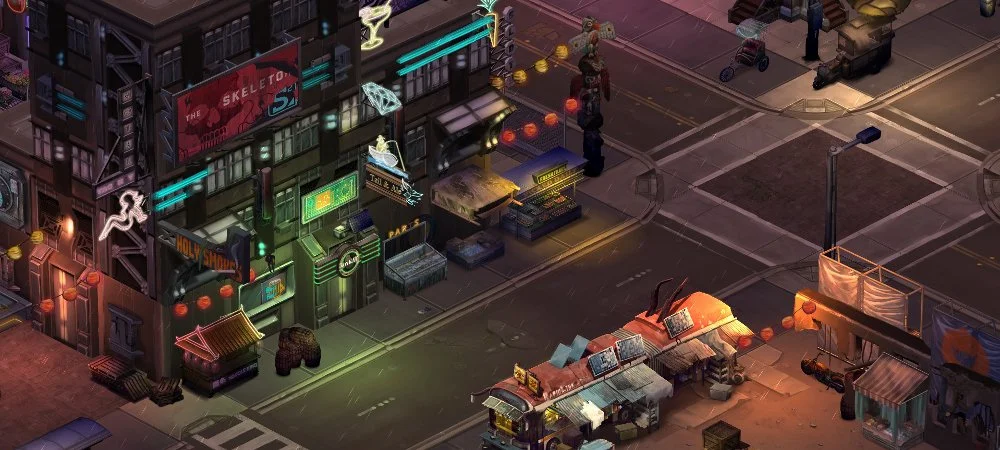

The Shadowrun series merges the cyberpunk and fantasy genres to create a unique and captivating world. Originating as a tabletop RPG, the Shadowrun video game adaptations have garnered a dedicated following. Titles like “Shadowrun Returns” (2013) and its sequels offered players the chance to navigate a dystopian future filled with magic, technology, and intrigue. What sets these games apart is their blend of real-time exploration and turn-based combat, allowing for diverse gameplay experiences. The series is renowned for its deep narratives, branching storylines, and the freedom it provides players to shape their characters and outcomes. Shadowrun’s intriguing fusion of cybernetic enhancements, magic, hacking, and urban exploration has solidified its position as a unique and beloved series in the realm of isometric RPGs.
Why Are RPGs Isometric?
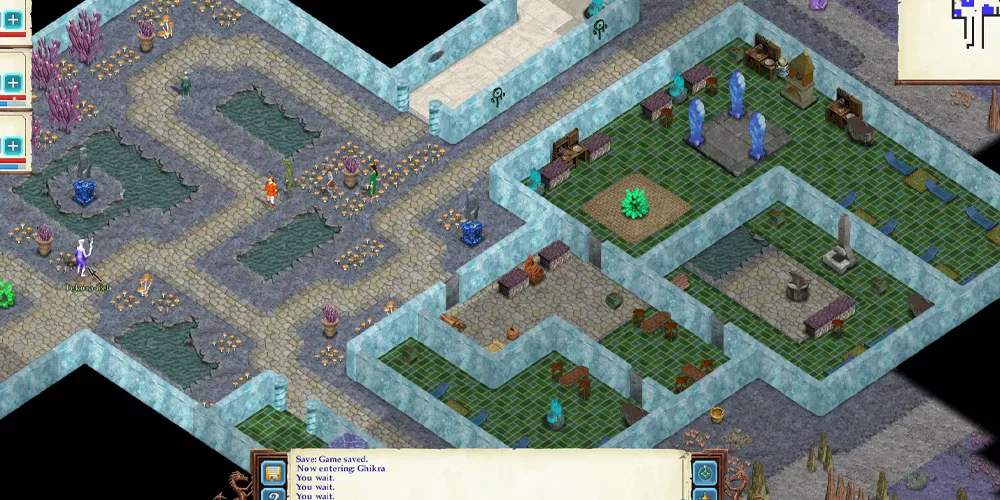

The isometric perspective in role-playing games (RPGs) serves as a unique artistic and gameplay choice that offers several advantages. Isometric RPGs present the game world at an angle, providing a three-dimensional appearance on a two-dimensional screen. This perspective allows for intricate details, depth, and a panoramic view of the game environment. Isometric RPGs became popular in the late 1990s and early 2000s, offering an alternative to traditional top-down or side-scrolling views. This perspective enhances exploration, strategy, and storytelling by providing a broader visual context for players.
History of Isometric RPGs
The history of Isometric RPGs, or role-playing games, is rich and storied, spanning several decades of gaming history. The isometric perspective, characterized by a three-dimensional representation of game environments in two dimensions, has been a popular choice for RPGs due to its ability to provide immersive worlds and strategic gameplay. Here’s a brief overview of the history of isometric RPGs:
- 1980s: The isometric RPG genre gained prominence in the 1980s with titles like “Ultima VI: The False Prophet” (1990) and “Wasteland” (1988). These early games introduced players to the isometric perspective and laid the groundwork for future RPGs.
- 1990s: The 1990s saw a surge in the popularity of isometric RPGs, with iconic titles such as “Baldur’s Gate” (1998) and “Fallout” (1997) defining the genre. These games offered deep storytelling, complex character customization, and strategic combat, setting a new standard for RPGs.
- 2000s: The early 2000s saw the continuation of the isometric RPG trend with games like “Icewind Dale II” (2002) and “Neverwinter Nights” (2002). These titles refined the gameplay mechanics introduced in the previous decade while pushing the boundaries of storytelling and world-building.
- 2010s: The isometric RPG genre experienced a resurgence in the 2010s, thanks in part to crowdfunding platforms like Kickstarter. Games such as “Pillars of Eternity” (2015) and “Divinity: Original Sin” (2014) captured the spirit of classic RPGs while incorporating modern graphics and gameplay elements.
- Present: Today, isometric RPGs continue to thrive, with new titles like “Disco Elysium” (2019) and “Wasteland 3” (2020) pushing the genre in new directions. These games offer players diverse storytelling experiences, deep character development, and challenging tactical combat, ensuring that the legacy of isometric RPGs remains strong in the gaming industry.
Overall, the history of isometric RPGs is a testament to the enduring appeal of the genre and its ability to evolve and adapt to the changing tastes of gamers.
What is the difference between isometric and dimetric games?
Isometric and dimetric games are both types of video games that utilize non-standard perspectives to create visually interesting and immersive worlds. While they share similarities, there are distinct differences between the two:
- Isometric Perspective:
-
- Isometric games feature a 2.5D perspective where all three axes (x, y, and z) are equally foreshortened, resulting in a sense of depth without any distortion.
- In isometric games, objects and characters appear as if they are viewed from a fixed angle, typically 45 degrees above the horizontal plane.
- The grid lines in isometric games are parallel, and objects retain their proportions regardless of their position on the screen.
- Dimetric Perspective:
-
- Dimetric games also utilize a 2.5D perspective but with a slight difference in the angle of the axes. Unlike isometric games, dimetric perspectives often have two axes at equal angles and one at a different angle.
- In dimetric games, the viewing angle may vary, with some axes being more foreshortened than others. This can create a sense of depth and perspective, but objects may appear slightly distorted compared to isometric games.
- Dimetric perspectives may include variations such as 2:1 or 3:4, where the ratio of one axis to another is different, resulting in a skewed appearance.
In summary, while both isometric and dimetric games utilize non-standard perspectives to create depth and visual interest, the key difference lies in the angle of the axes and the degree of foreshortening. Isometric perspectives maintain equal foreshortening along all axes, while dimetric perspectives may vary the angle and foreshortening of the axes to achieve a similar effect.
Which Game Engine Is Best for 2D Isometric Games?
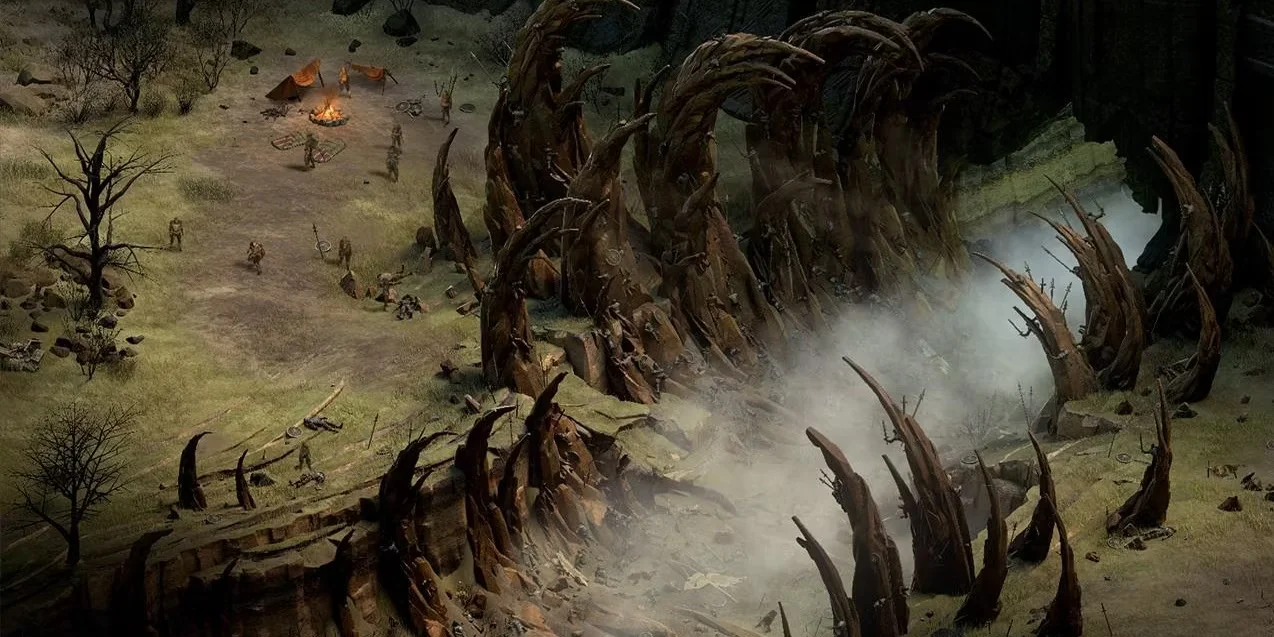

Several game engines cater to creating 2D isometric games, each offering unique features and capabilities. Unity and Godot are two prominent engines often chosen by developers for isometric projects. Unity provides a robust environment with a vast asset store, a large community, and tools for creating isometric grids and tilemaps. Godot, on the other hand, is known for its user-friendly interface, visual scripting, and support for pixel art. Both engines offer tools to simplify the creation of isometric assets, handle animations, and manage the complex layers of isometric environments.
Isometric RPG Classics and Their Impacts
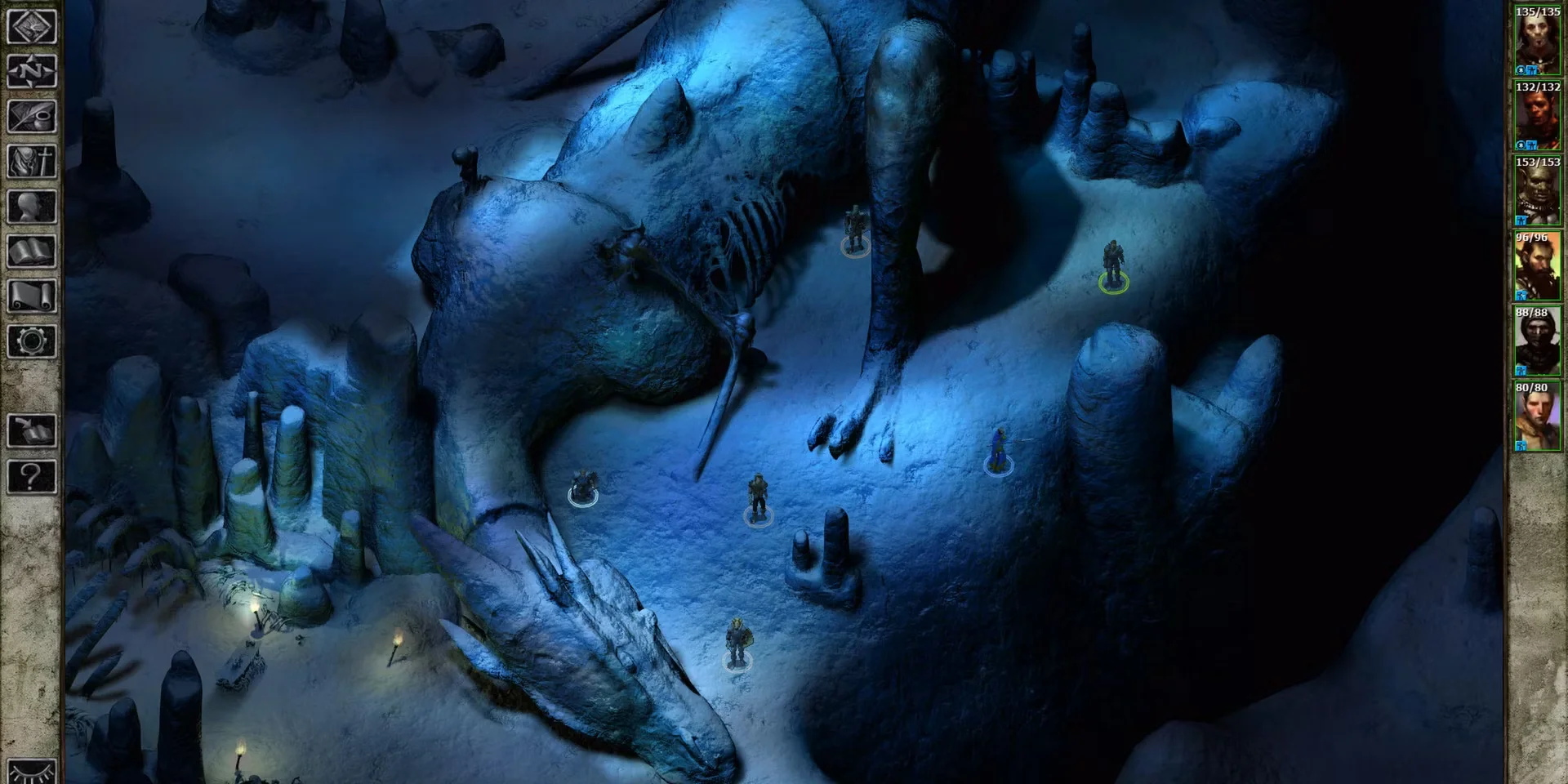

Isometric RPG classics have left an indelible mark on the gaming landscape. Titles like “Baldur’s Gate,” “Planescape: Torment,” and “Fallout” introduced players to rich narratives, deep character customization, and strategic combat within isometric environments. These games emphasized player choices, branching storylines, and immersive worlds. The impact of classics like “Baldur’s Gate” transcends their initial release, inspiring subsequent generations of RPG developers to explore isometric perspectives for their projects.
Isometric RPG and Player Immersion
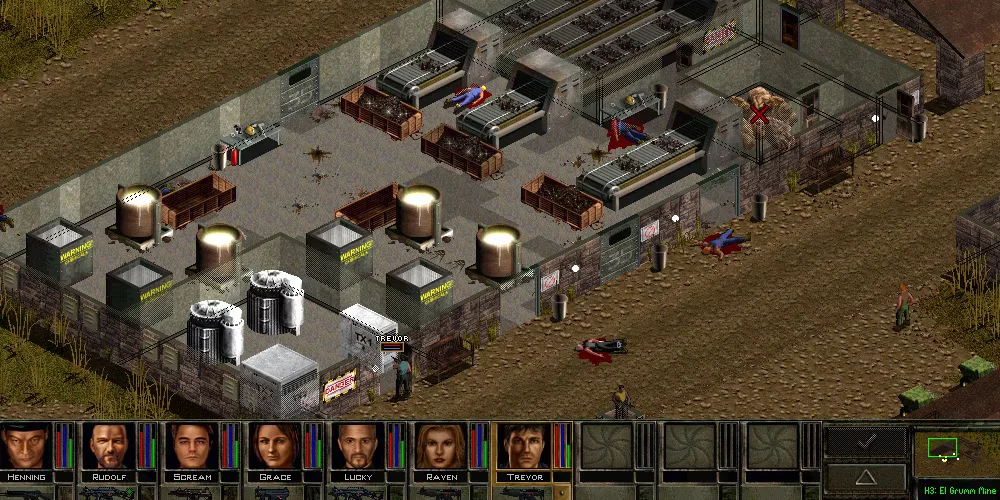

The isometric perspective plays a crucial role in enhancing player immersion in RPGs. By offering a broader view of the game world, isometric RPGs enable players to absorb more information about their surroundings, uncover secrets, and plan their strategies effectively. The sense of depth and scale achieved through isometric visuals creates a more realistic representation of the game environment, drawing players into the world.
Furthermore, isometric RPGs often emphasize intricate level design, detailed environments, and atmospheric lighting. These elements contribute to a sense of place and time, allowing players to feel like they are exploring a living, breathing world. The combination of immersive storytelling, well-crafted environments, and strategic gameplay enhances the player’s emotional connection to the game.
Isometric RPGs also encourage exploration and curiosity. Players are more likely to interact with objects, NPCs, and environmental elements when they can see them clearly from an isometric perspective. This contributes to a sense of agency and involvement, making players feel like active participants in the game’s universe.
How Isometric Video Games Differ from Other Perspectives
Isometric video games utilize a distinct perspective that differs from traditional top-down or side-scrolling views. In isometric games, the game world is presented from a pseudo-3D angle, typically viewed from a fixed diagonal viewpoint that provides depth and dimension to the environment. This perspective allows players to perceive the game world from an elevated angle, often at a 45-degree tilt, offering a unique blend of depth, visibility, and spatial awareness. Unlike side-scrolling games, which present a flat, 2D view of the game world, and top-down games, which offer a bird’s-eye view, isometric games provide a more immersive and dynamic presentation that enhances exploration, navigation, and strategic planning.

